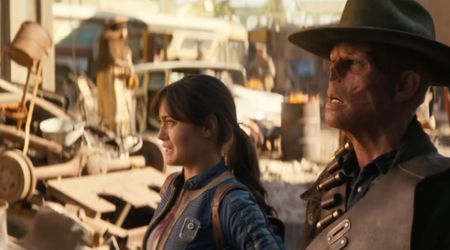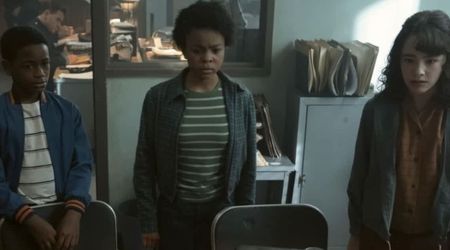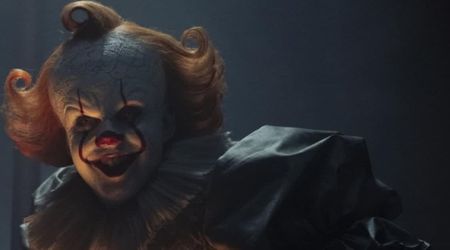That giant killer doll is real?! 5 chilling facts about ‘Squid Game’ that fans are just now learning

'Squid Game' season 3, the final chapter, is about to drop on Netflix on Friday, June 27. "Squid Game stops for no one, so Gi-hun will be forced to make some important choices in the face of overwhelming despair as he and the surviving players are thrust into deadlier games that test everyone’s resolve," the synopsis revealed. "With each round, their choices lead to increasingly grave consequences." As per USA Today, the season will pick up from its previous bizarre cliffhanger, and creator Hwang Dong-hyuk has confirmed that the series won't be returning for any more seasons. As fans wait to witness the fate of Gi-Hun, here are some unsettling facts about the series that are believed to be true.
The giant 'killer' doll Young Hee is not just a movie prop
View this post on Instagram
'Squid Game' immortalized the first game round where a giant animatronic doll resembling a schoolgirl plays a ruthless killing machine while chanting 'Mugunghwa kkochi piotsseumnida'. However, few people are aware that the now-famous Young Hee doll from the "Red Light, Green Light" scene of the show is actually a real museum item that is housed in a hamlet in Jincheon County, South Korea. Young Hee was borrowed for filming and then returned to the carriage museum, where it now stands on display, as per Elle Decor. The doll's soft features, pigtails, and attire have been inspired by a textbook character from the '70s and '80s.
Seong Gi-hun’s plotline is inspired by a true story
Creator Dong-hyuk had previously explained that the storyline was closely inspired by the 2009 Ssangyong Motor Strike, as per Soap Central. “Through the reference to the Ssangyong Motor layoffs, I wanted to show that any ordinary middle-class person in the world we live in today can fall to the bottom of the economic ladder overnight,” he said. As per The Guardian, it is marked as one of the most turbulent times in South Korea when more than 2,646 workers lost their jobs after a massive layoff. The workers then went on a violent strike that led to plenty of arrests and clashes with the law forces. Lee Chang-kun, a Ssangyong Motor employee, who was imprisoned for six months following his role in the strike later confirmed that the series was indeed based on their struggles, "The order of games in Squid Game resembles the phases of agony Ssangyong workers had to undergo — indeed, the plot appears to be inspired by the seventy-seven-day occupation," he wrote in the review.
Organ harvesting showcased in the series is inspired by real life
View this post on Instagram
The sad and horrific ending of players ridden with debt in the series is indeed following the real organ trafficking scenes from around the world. However, experts are calling the organ black market depicted as fictional. “The kind of black market Hollywood has invented, and that we see played out in Squid Game, is pure fiction,” Tenaya Wallace, founder and director of Donate Life Hollywood, told Businesswire. However, according to Human Trafficking Search, the organ industry has been valued annually at $840 million, and since it is a highly sensitive topic, the details of the underground black market demand remain shrouded in mystery.
'Squid Game' set is inspired by the real-life Brother's home (Hyeongje bokjiwon)
View this post on Instagram
Internet users have come up with a startling theory that the sets, costumes, and the concentration camp-like environment depicted in the series have been inspired by South Korea's best-kept secret from the 80s- Brother's home (Hyeongje bokjiwon). It was meant to be a shelter for the homeless, but pictures circulating online describe it as a hellish Auschwitz camp. Survivors claimed that those residing in the shelter were subjected to brutal rapes, tortured, used as cheap labour and kept in inhumane state, as per BBC. "I rarely had a chance to take a shower. Lice were all over my body. We had rotten fish and stinking barley rice every day, literally every day. Almost all of the inmates were malnourished," Han, one of the survivors, recalled.
'Squid Game' was rejected for over a decade
View this post on Instagram
As per BuzzFeed, Hwang Dong-hyuk's script was overlooked by major studios for almost a decade due to its grotesque plotline. Dong-hyuk wrote the brilliant plotline while living in dismal conditions with his mother and grandmother. The maverick creator had to put his dreams aside after selling his laptop for cash; however, his luck changed after the pandemic when Netflix picked it up for production. "The world has changed,” Hwang said. “All of these points made the story very realistic for people compared to a decade ago.” The series managed to break records worldwide and reached the number one position with various dubbed versions.
'Squid Game' stunts were real
View this post on Instagram
As per SpyScape, Dong-hyuk wished to instill fear among the actors, and hence, the sets were created to perform real stunts. "The glass made them nervous,” he said. “It felt like really jumping off a high bridge. The game was real, and they felt real fear. Their bodies showed that fear." “The set was about one meter (3 feet) above the ground. We put real tempered glass there and ran around on it," actress Jung Ho-yeon revealed. No wonder fans almost had their heart in their mouths while witnessing the gory action sequences.










